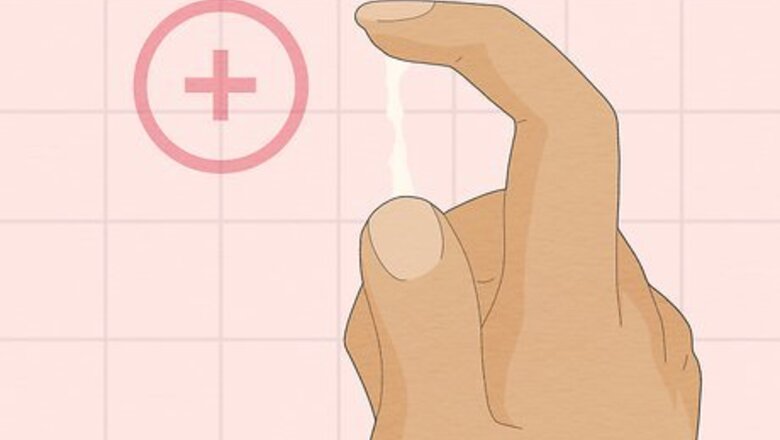
views
X
Research source
Fischer G; Chronic vulvovaginal candidiasis: what we know and what we have yet to learn. Australas J Dermatol. 2012 Nov;53(4):247-54.
Women between the ages of 20 – 40 years are most susceptible to developing vaginal thrush and about 70% of women will experience at least one episode of vaginal thrush in their lifetime.[2]
X
Trustworthy Source
PubMed Central
Journal archive from the U.S. National Institutes of Health
Go to source
If you suspect you have vaginal thrush, you should speak to your doctor and get medical treatment, followed by diligent home treatment and care.
Getting Medical Treatment
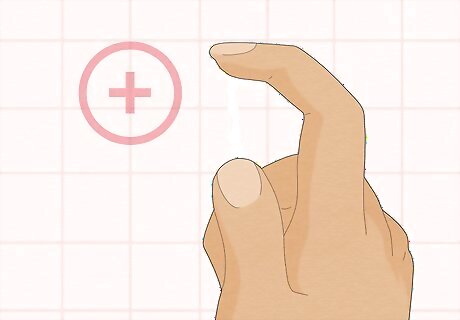
Let your doctor examine your genital area. You should get an official diagnosis for vaginal thrush, even if you plan to use home remedies. Your doctor will examine your genital area and likely perform a speculum exam and collect a sample of any vaginal discharge, which will be examined under a microscope. Your doctor may also look for and ask about the symptoms of thrush, which include: An abnormal vaginal discharge. The discharge may appear like cottage cheese, with whitish lumps that do not have an odor. Swelling on and around the genital area Soreness, itchiness, or a burning sensation in the genital area Your doctor may also ask you if you feel any pain or discomfort during sex or when you urinate.
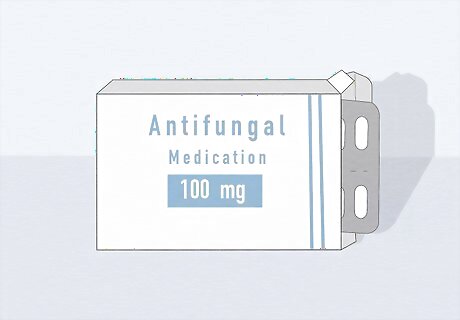
Receive a prescription for oral or vaginally-applied antifungal drugs. Your doctor may prescribe oral antifungal drugs, like fluconazole or itraconazole, or antifungal drugs that you apply directly to your vagina, like miconazole or clotrimazole. These antifungal drugs only work exclusively on vaginal thrush. You may experience more intense burning and itching in your genital area during the first few days of treatment but your symptoms should clear up within seven to 14 days. These medications have a “cure rate” of around 80-90%.
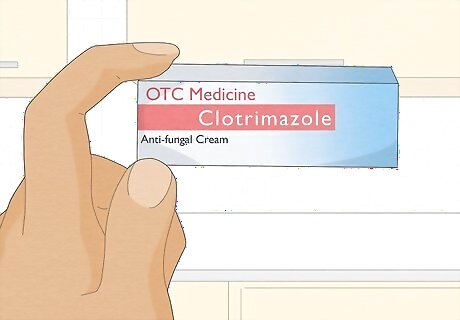
Get over-the-counter medication if you have had vaginal thrush before. If you have experienced a vaginal fungal infection before and your doctor confirms that you have vaginal thrush, you can take OTC antifungal drugs, which have a lower concentration of the antifungal agents found in prescription antifungal medications. Most OTC medications have a one-day to seven-day dose. Take a single dose, as it is usually the most effective for occasional vaginal thrush. If you get repeat infections, take the longer dose medications. Do not take OTC medications if you believe you have any other infection besides vaginal thrush. Some patients experience more burning from the one-day treatment. If this is the case, you should switch to one of the longer treatments. If you experience a lot of irritation or burning on the outside of your vagina, apply A&D ointment liberally to the area (but not inside the vagina) to help relieve symptoms. OTC medications are also recommended if your symptoms are relatively mild, you experience no fever or pelvic pain and you are not pregnant. If you think you may be pregnant or are pregnant and develop vaginal thrush, you should speak to your doctor.
Trying Unconfirmed Home Treatment
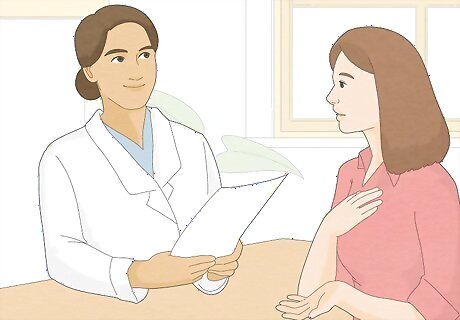
Talk to your doctor before attempting any home treatments. Though you may be trying to avoid a trip to the doctor, it is important that you at least call your primary care physician before attempting any home treatments. Though there may be much anecdotal evidence behind some of these methods, they have not been proven to work, and they may in fact make matters worse, causing further irritation and/or infections.
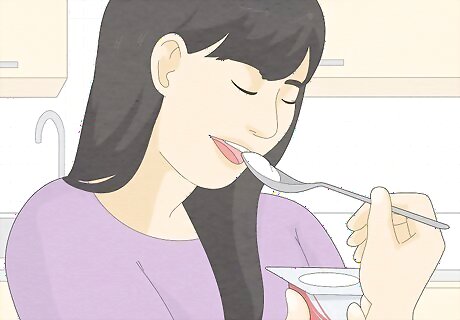
Eat yogurt. Yogurt can help to repopulate your vagina with harmless bacteria that can “crowd out” the Candida bacteria, though this is not supported by many scientific studies. Do not insert yogurt into your vagina. This is an old treatment and can be associated with doing more harm than good, as the sugars in the yogurt can lead to more problems, such as other infections.
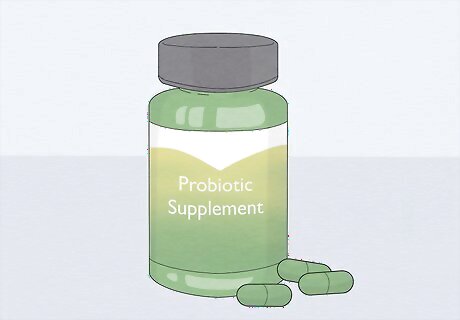
Take a probiotic supplement. Probiotic capsules can be found in most grocery stores and drugstores. Look for a brand that contains Bifidobacterium longum; Lactobacillus rhamnosus; Bifidobacterium infantis; Lactobacillus acidophilus; Lactobacillus reuteri HA-188. Keep in mind it is not medically known if probiotics can help to prevent vaginal thrush.

Use over-the-counter creams and gels for vaginal yeast infections. You can use OTC creams and gels for vaginal yeast infections to treat vaginal thrush, as they contain antifungal agents. Look for common brands like Monistat and Gyne-Lotrimin at your local drug store. Use them according to the instructions on the label. If you have recurring infections, use them for seven days. Use a single dose treatment if you have occasional infections.
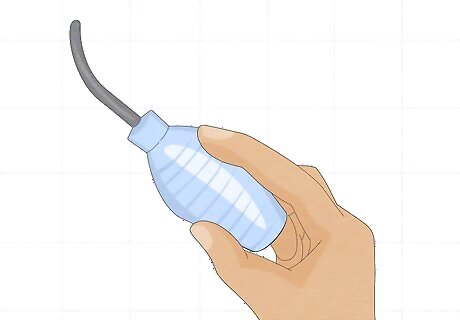
Try douching. While douching is generally not recommended for women— and there is no evidence to support it use — it can be used as a home treatment method when you have vaginal thrush. Discuss this with your doctor before attempting. You can douche with the following substances: Pure apple cider vinegar: Apple cider vinegar can restore the acidic pH of your vagina and is also an antibacterial agent. Douche twice a day for four days and then daily until your vaginal thrush symptoms disappear. Diluted hydrogen peroxide: Combine 3% hydrogen peroxide with an equal amount of warm distilled water and douche your vagina with this mixture. Make sure you use distilled water, so it will be sterile and bacteria-free. Douche twice a day with this mixture for four days and then daily until your vaginal thrush symptoms disappear. Essential tea tree oil: Put two to three drops of tea tree oil into eight ounces of distilled water. Douche with this mixture twice a day for one week and then daily until all symptoms of your vaginal thrush disappear. Do not ingest the tea tree oil orally.
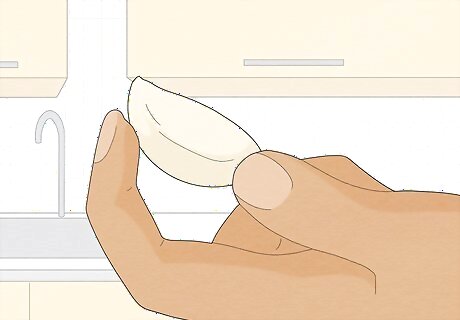
Consider garlic. It is thought by some that inserting a whole clove of peeled garlic into your vagina can treat vaginal thrush. Replace the garlic with a fresh clove every four hours for seven days or until your symptoms go away. Again, it is important to note that there is no scientific evidence to support this and that inserting something foreign into your vagina may cause more harm than good. You can also consume garlic orally, either on its own, or in cooking.
Caring For Your Vaginal Area
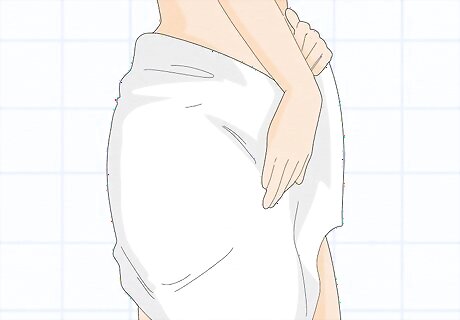
Keep your genital area clean and dry. As you recover from vaginal thrush, you should focus on keeping your genital area clean and dry. Wash your vagina with water and mild soap or no soap. Pat it dry or air dry it after washing. When wiping yourself after going to the bathroom, use soft white toilet paper and always wipe from front to back.
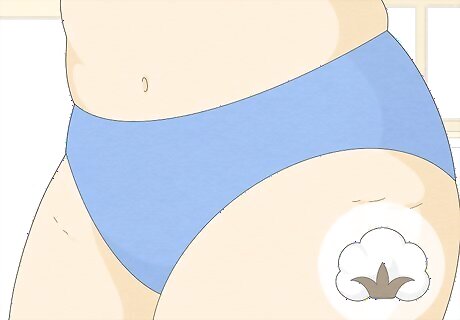
Wear cotton underwear and avoid wearing tights or panty hose. Breathable fabrics like cotton ensure your vagina can breathe and is not irritated due to sweating during the day. When washing your underwear, you should use mild, fragrance-free soap. Avoid using fabric softeners or dryer sheets, as these can contain chemicals that may irritate your vagina.

Avoid vaginal sprays, powders, perfumes, or fragrances. These substances can irritate your vagina and delay the treatment of vaginal thrush. You should also avoid taking bubble baths, using bath oils, talc, or powder. Make sure to avoid powders that contain cornstarch, as cornstarch provides food for microorganisms.

Use sanitary pads, not tampons. Tampons can irritate your vagina and slow down the treatment process, so it's best to avoid them while you recover.
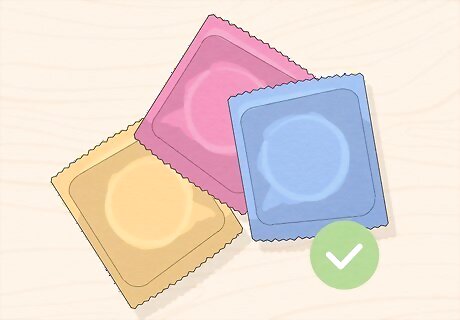
Use condoms when you have sex. Though vaginal thrush cannot be spread through sexual contact, you should still use condoms when having sex to prevent the spread of other diseases or infections.



















Comments
0 comment